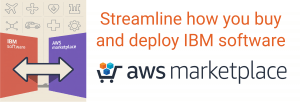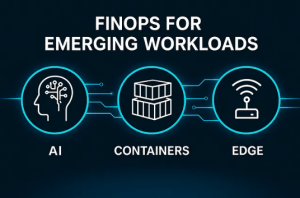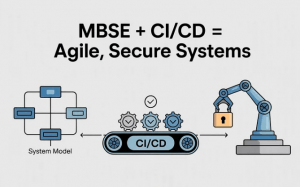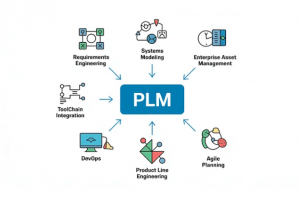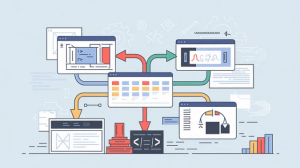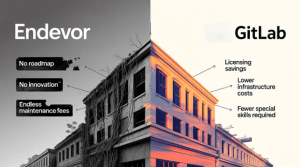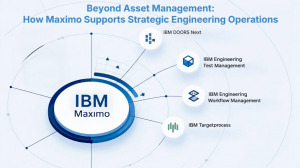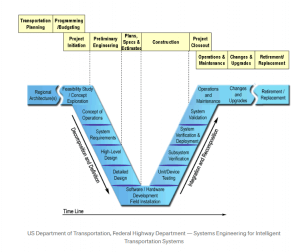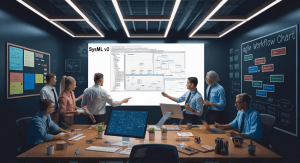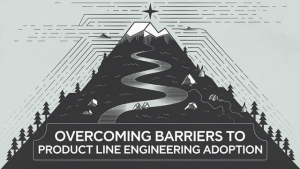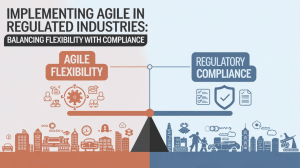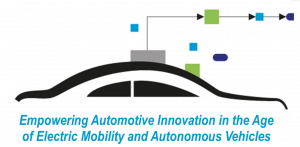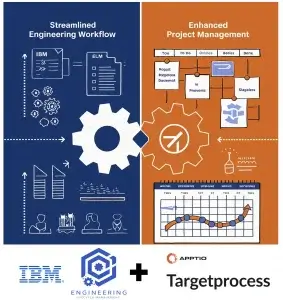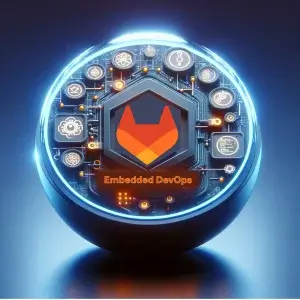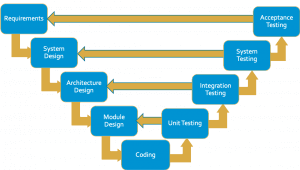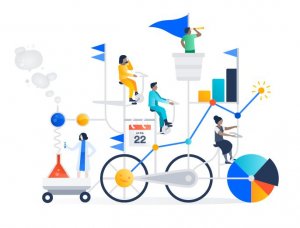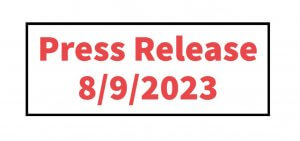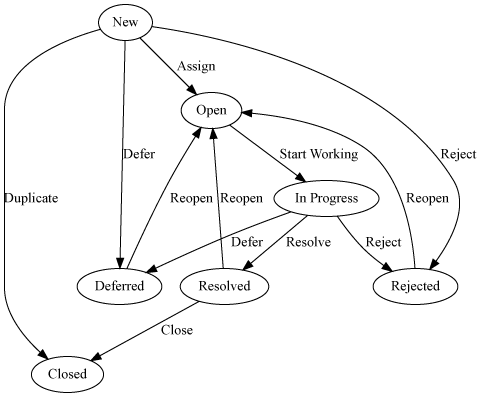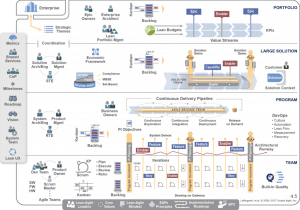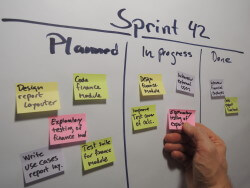Zombie Resources vs. Zombie Data: How Storage & Data Sprawl Haunt Cloud Budgets If you thought compute zombies were scary (Zombie Workloads: The Walking Dead of Your Cloud Bill) — wait
Mainframe SCM Modernization: From Legacy to Git Mainframe teams have depended on Software Configuration Management (SCM) tools such as Endevor, SCLM, and ChangeMan ZMF to manage source code, govern
The Hidden Cost of Poor Traceability – and How to Fix It Across the Lifecycle Every engineering team believes they “have traceability.” Few actually do. In most organizations, traceability
How Model-Based Engineering (Rhapsody, Cameo, Capella) can plug into CI/CD Traditional document-centric engineering no longer cuts it. The shift to Model-Based Systems Engineering (MBSE) offers a structured, model-driven way to
FinOps for Emerging Workloads: How FinOps Tools Prepare You for AI, Containers & Edges Why the next frontier of cloud spend needs visibility, automation and governance — today. The
Leveraging FinOps for AI: Bringing Financial Discipline to Artificial Intelligence “Everyone’s talking about AI — but few are talking about what it costs.” That single observation from Stephen Old, Head
From Guest Author Walter van der Heiden I’m very pleased to share something we’ve been building with Andy Lapping, Technical Fellow at SodiusWillert. Together, as IBM Champions, we’ve spent many
Why Spreadsheets, Word Docs, and Lightweight Tools Fall Short for Safety-Critical Engineering When Dorothy and her companions wandered through the forest in The Wizard of Oz, they feared the unknown
Zombie Workloads: The Walking Dead of Your Cloud Bill If you’ve ever opened your cloud bill and felt a sudden chill run down your spine, chances are you’ve encountered
IBM Apptio Cloudability: The X-Ray Vision for Your Cloud Costs Cloud computing is the backbone of many businesses. Yet, managing cloud costs and optimizing resource use can feel like
How Instana Improves IBM ELM Application Performance Engineering Lifecycle Management (ELM) is mission-critical for organizations that design, build, and validate complex systems. Tools like IBM DOORS Next, Engineering Test
The Hidden Costs of Cloud Waste: How FinOps Turns Visibility into Value Moving to the cloud often provides efficiency, flexibility, and reduced costs. Yet often the reality that cloud
Why Generative AI Demands a New FinOps Playbook The AI gold rush is in full swing. From text generation to image creation, teams across industries are diving into generative
Imagine you walk into your favorite sandwich shop. You order a turkey club — nothing unusual. But instead of reaching into the same pantry they used for the last
Continuous Integration and Deployment for Model-Based Systems Engineering Model-Based Systems Engineering (MBSE) Meets CI/CD Model-Based Systems Engineering (MBSE) is essential for managing increasingly complex systems that integrate hardware, software,
Enhancing PLM with Tools Like IBM ELM and GitLab Introduction At Siemens Live, our team at 321 Gang had dozens of conversations with PLM professionals asking a consistent question: “How
Toolchain Trouble? Interoperability Is the Fix The success of engineering teams hinges on their ability to collaborate effectively across different disciplines. Modern engineering workflows require interoperability between various applications and
The Move from Endevor to GitLab Explained Whether your organization is looking to reduce costs, adopt Agile and DevSecOps, embrace cloud-native practices, or modernize your mainframe environment, migrating from Broadcom’s
Tame Your Cloud Spend - Here’s How If your monthly cloud bill makes you wince - you’re not alone. Despite promises of scalability and cost savings, many organizations discover their
Beyond Asset Management: How Maximo Supports Strategic Engineering Operations IBM Maximo is traditionally seen as a best-in-class enterprise asset management (EAM) solution. Organizations across industries rely on it to manage
Getting Started with FinOps: Practical Strategies for Cloud Cost Management As organizations continue their shift to cloud-based infrastructure, managing costs effectively has become a crucial priority. FinOps (Financial Operations) is a
Choosing a Requirements Traceability Tool: A Brief Guide In software development the effective management of requirements is a important aspect of successful outcomes. Managing clear, concise, and error-free requirements
Large infrastructure projects are often synonymous with complexity, involving multiple stakeholders, intricate design activities, and a myriad of requirements. Such projects, whether they are public works, private structures, industrial plants,
Integrating SysML v2 with Agile Methodologies for More Efficient Systems Engineering Introduction Agile methodologies are used to drive faster development cycles and there is a need to integrate these approaches
Product Line Engineering — barriers to adoption and how and why to overcome them Implementing tools like Pure Variants for product line engineering (PLE) can be challenging, but understanding the common barriers to
Implementing Agile in Regulated Industries: Balancing Flexibility with Compliance Agile methodologies have changed software development, promoting flexibility, collaboration, and customer-centric approaches. However, implementing Agile in regulated industries — such as
Why Energy Companies Must Invest in Requirements Management and Validation for Project Success In today’s energy landscape, successful project execution hinges on one crucial factor: clear, structured, and validated requirements.
Turbonomic: Revolutionizing VMware Optimization for Significant Cost Savings Since Broadcom’s acquisition of VMware, customers have reported significant increases in costs, particularly for support and maintenance fees. These price hikes have
How IBM watsonx AI Code Assistant Can Aid Embedded System Developers Embedded systems development demands efficiency, safety, and strict adherence to resource constraints. IBM watsonx Code Assistant, powered by the
Code Quality in Embedded Development: Leveraging GitLab’s Static and Dynamic Analysis Tools Embedded development presents unique challenges. From tight hardware constraints to real-time performance requirements, every line of code in
Unlocking the Value of IBM’s Rhapsody AUTOSAR Extension Empowering Automotive Innovation in the Age of Electric Mobility and Autonomous Vehicles The landscape is undergoing a profound transformation in the ever-evolving
How Will IBM Engineering Solutions Aid in the Movement Towards a Software Defined Vehicle? Background: Software Defined Vehicles Products have been revolutionized by the decoupling of software from hardware. This
Transforming the Aerospace and Defense Sector with IBM Engineering Lifecycle Management (ELM) The Aerospace and Defense (A&D) industry is known for its high stakes, complex systems, and rigorous regulatory standards.
Automotive Systems Engineering and Model-Based Variant Management So, in the world of automotive systems engineering, guess what’s driving all the cool new customer features? It’s those ever-changing trends in electrification,
Honeywell MVCS team reduced cycle time by 50% and costs by 30% The Honeywell MVCS team reduced cycle time by 50% and costs by 30% through the successful application of
Comparing and Contrasting Systems Engineering Tools with Building Information Modeling (BIM) Tools With large-scale infrastructure projects, two essential methodologies have emerged: Systems Engineering (SE) and Building Information Modeling (BIM). Both
Comparing One Piece at a Time Solutions to an Integrated Solution for Systems Engineering Companies often face a critical decision: should they assemble a best-of-breed (BoB) solution one piece at
Creating a Product Reuse Platform With Modern Product Variant Management Systems engineering projects in the Automotive, Aerospace and Defense, Electronics, and Medical Device industries are seeing an increased adoption of
Enhancing Agile Engineering with an Integrated IBM Targetprocess and IBM ELM Solution The IBM Targetprocess and IBM Engineering Lifecycle Management integrated solution pave the way for enhancing agile engineering. This
Improving Embedded Software Development through CI/CD In the dynamic domain of embedded systems, there’s an increasing need to integrate best practices from the broader software field to ensure consistent, timely,
GitLab as a Tool for CI/CD in Embedded Systems Development: A Step-by-Step Guide Continuous Integration/Continuous Deployment (CI/CD) emerges as a critical modern practice in the realm of software development, particularly
Capacity Planning in an Agile World: Balancing Predictability and Responsiveness with Agile Planning Tools The rise of Agile methodologies has significantly impacted software development practices. While Agile prioritizes adaptability and
Embedded Systems Requirements Traceability Insights What Is Requirements Traceability? Requirements traceability connects models, tests, and code with requirement definitions to help manage change and reduce waste in the design life
Why and How: Implementing GitLab for Embedded Systems Development GitLab offers many technical advantages that make it particularly suitable for embedded systems development. These features cater to the unique
Embracing the Evolution: Module Baselines in IBM DOORS Next with Pure Variants Managing complex product lines and systems development requires robust tools that can handle intricate configurations and change management.
Explore Requirements Traceability! Requirements traceability plays a pivotal role in managing engineering intricacies and ensuring project success. In this guide, we will explore what requirements traceability is, its importance, best
Make AUTOSAR work for you with IBM Rhapsody - AUTOSAR Extension A car today could not be moved without electronics. In fact, you wouldn't even be able to start the
7 Ways to Decide if a PMO Organization is Ready for Lean Portfolio Management Jira Align Tip Sheet While it might seem like an overwhelming endeavor, implementing lean portfolio management
Lean Portfolio Management | Jira Align As organizations move from project–based, time–centric planning to focusing on product–oriented planning, they look to lean and agile practices to ensure they have the
The Difference Between Velocity, Capacity, and Load - A Clarification of Terms We often see a lot of confusion among new agile practitioners in regards to the definition and use
Press Release | 321 Gang joins the SodiusWillert Group: A Strategic Move to Strengthen Engineering and Development of Advanced, Mission-Critical Systems and Software Scottsdale, AZ, August 9, 2023 – SodiusWillert
Security as Code: A Smart Solution to a Complex Endeavor Security as code gives pragmatic meaning to the concept of DevSecOps. By embedding security throughout your SDLC, security controls can
Leveraging IBM Global Configurations with Pure Variants Feature Modeling Enhances Engineering Reuse Complexity is one of the largest challenges facing software and systems engineering teams today. Software applications are built
Product Line Engineering | Pure Variants Product Line Engineering is revolutionizing the way systems engineering is performed, and it is no surprise that it is becoming an increasingly important engineering
Incremental Implementation | What it is. Why we use it. Why it is important Scaled Agile or Scrum are popular agile development approaches for large enterprises. Are they a problem?
Accelerate Engineering Lifecycle Management | Agile Teams As engineering teams are asked to deliver more products faster to market, traditional engineering practices don’t have what it takes to adapt to
Product owners and project managers need to provide teams with communication and collaboration tools that empower teams to collectively manage plans, tasks, and project status. Discover how to capture, trace, analyze, and manage changes to requirements with IBM’s ELM suite that optimizes communication across your development teams and stakeholders.
3 Ways to Ensure Compliance Across the Engineering Lifecycle For companies in industries with increasingly stringent compliance regulations, such as Automotive, Aerospace and Defense, Medical, or Public Infrastructure — getting
10 Steps to High Performance Scaled Agile Teams Only Jira Align is natively built for scaling agile teams to the enterprise. Here are ten tips for how to scale your
Process Analyzer Automatically Analyze and Document IBM Rational Team Concert (RTC) Processes Process Analyzer is a utility, developed by Joe Meagher, Inc., that generates a statemodel of the business processes used
Accelerating Systems Lifecycle Development 321 Gang’s Accelerating Systems Lifecycle Development solution is a verified IBM Global Solution that enables organizations to address increasing complexity, shortened cycle times, continuous change, and collaboration demands while
SAFe for Government | Observations from the 2017 SAFe Summit Steve Mayner and I led two sessions on applying Lean-Agile principles and SAFe in a government context at the SAFe
Using SAFe 4.5 on Government Contracts Quite a number of federal government programs have been adopting SAFe 4.0. The challenge has been to consider whether to use 3-level SAFe, 4-level
Many have discussed, and some have questioned, how Scrum and agile principles apply to non-software disciplines. Can they apply? Will they provide benefits? We’ve been working with a large program that has gone “all in” scaling and applying agile. They build complex defense systems with hundreds of mechanical, electrical, and embedded software engineers and significant compliance demands.
We’ve helped many of these customers adopt and scale agile using the Scaled Agile Framework® (SAFe®). In doing so, we met with Dean Leffingwell (creator of SAFe) and the team at Scaled Agile (SAI) to discuss some of our perceived challenges using SAFe in an engineering environment. We were looking for support for engineering work (requirements, designs, modeling, simulations, trade studies), different role names, support for supply chains, and inclusion of manufacturing and production — just to name a few. Our plan was to become a Scaled Agile partner and deliver SAFe-based training that 321 Gang would supplement with our expertise on engineering. At the same time, SAI was also looking for ways to serve the needs of the large system builders, and invited us to collaborate on a version of SAFe for Lean Systems Engineering…and so it was that SAFe LSE was born.
